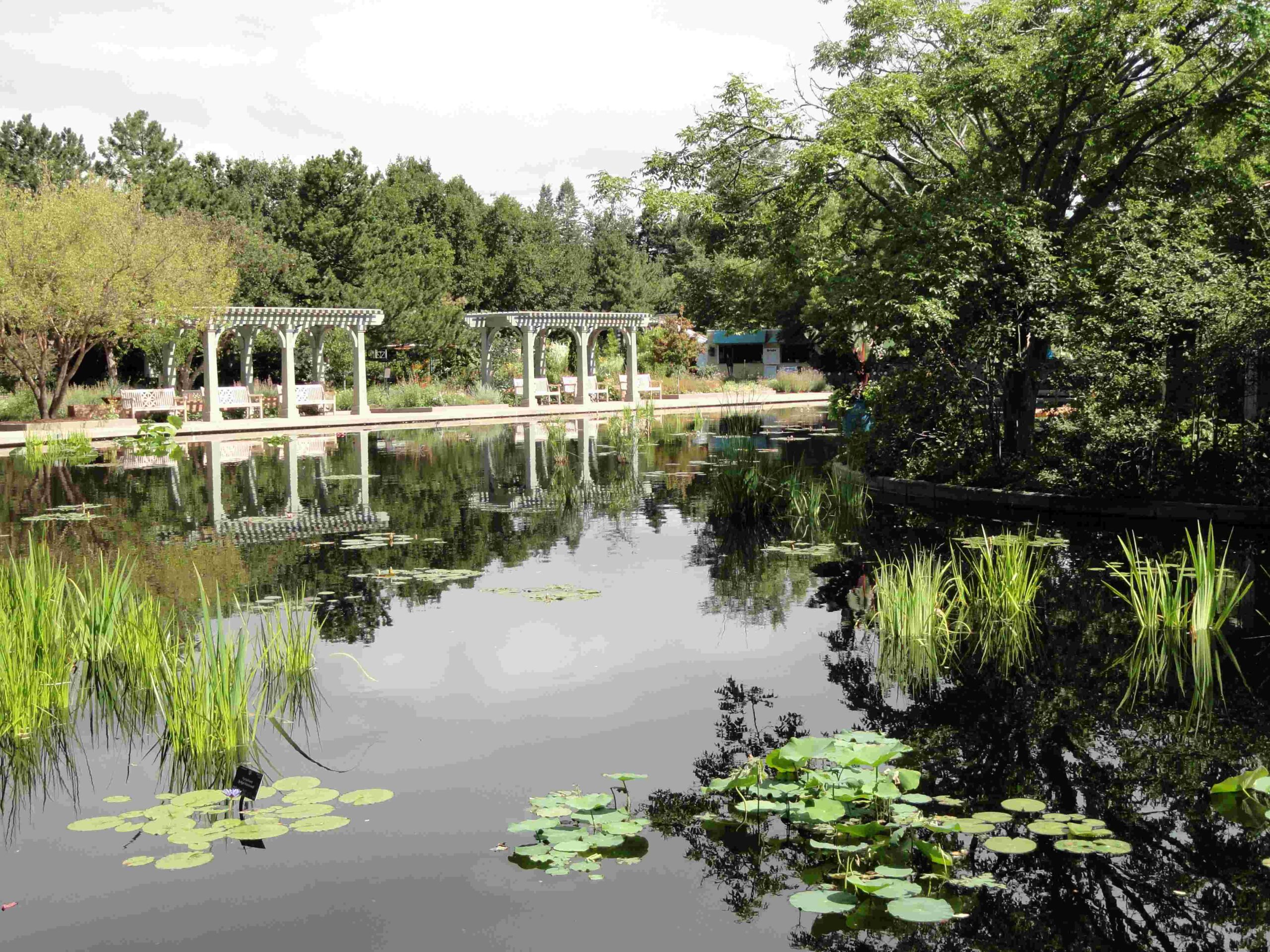The Denver Botanic Gardens lily pond is a captivating aquatic feature that showcases a diverse collection of water plants. Located within the 24-acre urban oasis, this serene water garden boasts an array of waterlilies, lotus, and marginal plants. Visitors can enjoy the vibrant colors and tranquil atmosphere of the lily pond, which serves as a centerpiece for the gardens’ aquatic displays and educational programs.
What are the Main Features of the Denver Botanic Gardens Lily Pond?

The Denver Botanic Gardens lily pond, also known as the Monet Pool, is the largest water garden in the complex. It features:
- A diverse collection of aquatic plants
- Hardy and tropical waterlilies (Nymphaea hybrids)
- Victoria waterlilies (Victoria ‘Longwood Hybrid’, Victoria amazonica, and Victoria cruziana)
- Stands of lotus (Nelumbo)
- Marginal plants such as Canna hybrids and aquatic Iris
The lily pond is particularly vibrant during peak bloom from June through September, offering visitors a stunning display of aquatic flora.
What Other Water Gardens Can Be Found at Denver Botanic Gardens?

In addition to the main lily pond, Denver Botanic Gardens features several other water gardens:
- Four Towers Pool: Located near the Science Pyramid, this pond showcases:
- Hardy intersubgeneric waterlilies
- Marginal plants like Canna ‘Sunrise Trumpeteer’ and Canna ‘Ra’
- Red stemmed thalia (Thalia geniculata f. rheumoides)
-
Swamp hibiscus (Hibiscus ‘Berry Awesome’)
-
Annuals Garden Ponds: These ponds feature:
- Rocky Mountain Legacy Collection of waterlilies
- Hardy waterlilies like ‘Colorado’, ‘Denver’, and ‘Denver’s Delight’
- Tropical waterlilies such as ‘Stan Skinger’ and ‘Bob Hoffman’
- Complementary tropical plants on the west side pond
When is the Best Time to Visit the Denver Botanic Gardens Lily Pond?
To fully appreciate the beauty of the Denver Botanic Gardens lily pond, consider the following:
- Peak Bloom Season: June through September
- General Visiting Hours: Typically 9 AM to 5 PM (check official website for current hours)
- Special Events: Water Blossom Festival in early August
- Optimal Viewing Times: Early morning or late afternoon for best lighting conditions
How Can Photographers Capture the Beauty of the Lily Pond?
For photographers looking to capture stunning images of the Denver Botanic Gardens lily pond, consider these tips:
- Lighting:
- Best times: Early morning and late afternoon
-
Avoid midday sun to prevent harsh shadows and reflections
-
Camera Settings:
- ISO: 100-400 for minimal noise
- Aperture: f/5.6 to f/11 for good depth of field
-
Use a polarizing filter to reduce glare
-
Composition:
- Shoot from various angles (water’s edge, elevated, low angle)
- Use a tripod for stability, especially in low light
What Specific Plant Species Can Be Found in the Lily Pond?
The Denver Botanic Gardens lily pond boasts a diverse collection of aquatic plants, including:
| Plant Type | Species/Varieties |
|---|---|
| Waterlilies | ‘Purple Passion’, ‘Paul Hariot’, ‘Black Princess’, ‘Albert Greenberg’, ‘Colorado’, ‘Denver’, ‘Denver’s Delight’ |
| Victoria Waterlilies | Victoria ‘Longwood Hybrid’, Victoria amazonica, Victoria cruziana |
| Marginal Plants | Canna ‘Sunrise Trumpeteer’, Canna ‘Ra’, Thalia geniculata f. rheumoides, Hibiscus ‘Berry Awesome’, Ruellia simplex |
| Lotus | Nelumbo species |
How Does the Lily Pond Contribute to the Gardens’ Educational Programs?
The Denver Botanic Gardens lily pond plays a crucial role in the institution’s educational initiatives:
- Aquatic Ecosystem Education: Demonstrates the interplay between various aquatic plants and their environment
- Plant Conservation: Showcases rare and endangered aquatic species
- Horticultural Techniques: Illustrates methods for growing and maintaining water gardens
- Seasonal Changes: Allows visitors to observe how aquatic plants adapt throughout the year
- Biodiversity Awareness: Highlights the diversity of aquatic plant species from around the world
What Conservation Efforts are Associated with the Lily Pond?
The Denver Botanic Gardens lily pond contributes to various conservation efforts:
- Species Preservation: Maintains populations of rare and endangered aquatic plants
- Research: Serves as a living laboratory for studying aquatic plant biology and ecology
- Sustainable Gardening: Demonstrates water-efficient landscaping techniques
- Native Plant Promotion: Showcases regional aquatic species to encourage their use in local water gardens
- Public Education: Raises awareness about the importance of aquatic ecosystems and their conservation
By maintaining this diverse collection of aquatic plants, the Denver Botanic Gardens lily pond not only provides a beautiful display for visitors but also plays a vital role in plant conservation and public education.
References:
1. https://www.botanicgardens.org/blog/august-walking-tour-water-gardens-1
2. https://www.botanicgardens.org/york-street/water-gardens
3. https://www.chicagobotanic.org/plantinfo/waterlilies

